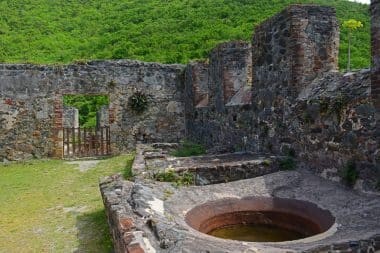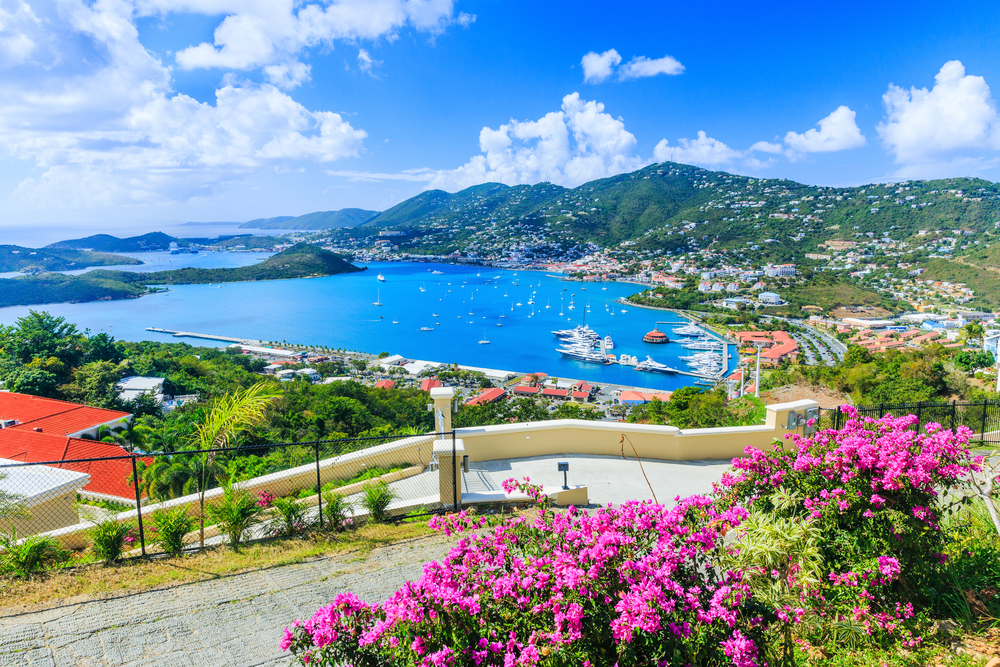There are some spots on this earth that are made for holidays and relaxation. This includes the U.S. Virgin Islands. The successful films of the “Pirates of the Caribbean” series could have been filmed there.
Where is the U.S. Virgin Islands?
The archipelago belongs to the Lesser Antilles. The US Virgin Islands, as they are officially called, consist of about 68 islands. Only the 3 largest among them, St. Thomas, St. John and St. Croix, are permanently inhabited. The archipelago is about 70 km from Puerto Rico . It is also not that far to the Dominican Republic.
A few facts

How do you get to the U.S. Virgin Islands?
There are international airports on two of the islands. There are no direct flights from Germany . Most air travelers have to change planes in Miami. Alternatively, a flight to the neighboring British Virgin Islands is also possible from Great Britain. From there there are ferry connections to the US Virgin Islands. By the way, the same entry and customs regulations apply as in the USA. The national language is English and payment is made with US dollars.
What can you expect in the U.S. Virgin Islands?

What can you do in the U.S. Virgin Islands?
The hilly islands (the highest point is the 474 m high Crown Mountain) offer you plenty of activities. To start, you can climb Crown Mountain, which towers over the capital Charlotte Amalie on the island of St. Thomas. A staircase of 99 (or 103?) Steps built from the ballast stones of earlier Danish sailing ships. The ships entered the port empty and left their ballast stones behind when they loaded cargo for the return journey. From the top of the mountain you have a wonderful panoramic view of the island and its small capital. But it has a lot of attractions to offer. At the first pillar is of course water sports. From snorkeling to surfing, sailing, kayaking, windsurfing, wakeboarding and kite surfing, everything is offered. On land, you can go hiking, horseback riding, golf, or try zip-lining. The Coral World Ocean Park allows its visitors to experience the sea creatures up close. There you can pet sharks by hand or give food to stingrays. Do you love nature? Then you should definitely visit the island of St. John. Almost two-thirds of the island is occupied by the almost 3,000-hectare Virgin Islands National Park. The park is a unique gem. You can hike through tropical rainforest, admire prehistoric petroglyphs of the long-extinct Taino Indians or visit the ruins of old farmhouses. In the past, there were numerous sugar cane plantations on the islands. The national park even has an underwater part. The beautiful Trunk Bay beach has an underwater snorkeling trail, which is well marked and signposted. It introduces the most important sea creatures that you will encounter during your dive. On the island of St. Croix, a little further south, a visit to Point Udall is worthwhile. At the easternmost point of the USA, a monument in the shape of a sundial was erected at the turn of the millennium. In addition, you can explore a tropical rainforest on St. Croix. One of the most popular activities in the Virgin Islands is island hopping. There is a lot of shipping traffic between the islands. You can use public ferry services or charter a private boat (also with a skipper). It would be a shame if you only stayed on one island during your vacation. Perhaps you would miss out on discovering your dream beach.
Beaches in the U.S. Virgin Islands
You don’t have to worry about cold water in the Virgin Islands. In “winter” the water temperature is on average +26°C, in summer even +28.5°C! There are beautiful beaches on each of the many islands. Some of the most beautiful are located on the north shore of St. John, the second largest island. The sand is snow-white. the water azure blue and the beach lined with palm trees. It almost seems like a cliché of the Caribbean, but it’s real. There are quiet beaches with shallow waters, ideal for beginners and families, other beaches are very suitable for snorkeling. There you can observe coral fish and sea turtles.
Holidays and festivities
There is something to celebrate in the US Virgin Islands practically all year round. This starts with Martin Luther King Day in January, President Day in February, Rewriting Day in March (when the Virgin Islands became part of the United States), Independence Day on July 4, and Friendship Day with Puerto Rico and Thanksgiving in November (apart from Christmas, New Year’s Day, Carnival and Easter). Because of the beautiful weather, most of the events take place outdoors. In addition, there are weekly markets, music events and a variety of other events. As everywhere in the Caribbean, the Virgin Islands celebrate Carnival very intensively.
General information
- Capital: Charlotte Amalie on the island of St. Thomas
- Languages: English is the official language.
- Currency: US Dollar (USD)
- Time zone: Atlantic Standard Time (AST), UTC -4
Geography
- Location: The U.S. Virgin Islands are located east of Puerto Rico in the Caribbean.
- Islands: The three main islands are St. Thomas, St. John and St. Croix.
There are also several smaller islands and islets. - Climate: Tropical climate with average temperatures between 24°C and 32°C.
The rainy season is from May to November.
Population
- Population: About 104,000 people (as of 2021).
- Ethnicities: The population consists mainly of descendants of African slaves, European colonists, and immigrants from other parts of the Caribbean.
Economy
- Main economic sectors: tourism, financial services, agriculture and rum production.
- Tourism: Tourism is the most important economic sector.
The islands attract numerous visitors every year, mainly because of their beaches, diving opportunities and historical sites.
Tourist attractions
- Beaches: Some of the most famous beaches are Magens Bay on St. Thomas, Trunk Bay on St. John, and Sandy Point on St. Croix.
- National Parks: The Virgin Islands National Park on St. John offers hiking trails, beaches, and historic sites.
- Historic sites: Fort Christian on St. Thomas, the Danish Fort Christiansvaern on St. Croix, and the Annaberg Plantation Ruins on St. John are just a few of the historic sights.
Arrival and transport
- Airports: Cyril E. King Airport (STT) on St. Thomas and Henry E. Rohlsen Airport (STX) on St. Croix are the two international airports.
- Ferries: Ferries connect the main islands of St. Thomas, St. John and St. Croix.
- Public transportation: There are limited bus services on the islands, but rental cars are a popular option for tourists.
Practical information for visitors
- Entry requirements: U.S. citizens do not need a visa, but they do need a valid ID.
Nationals of other countries should check the current entry requirements. - Health: There are several hospitals and clinics on the islands.
It is recommended to take out travel insurance. - Safety: The islands are generally safe, but as with any destination, tourists should be vigilant and take basic safety precautions.
Cultural peculiarities
- Holidays: In addition to the U.S. holidays, the islands also celebrate local festivals such as the Carnival on St. Thomas in April and May, the St. John Festival in July, and the Crucian Christmas Festival on St. Croix in December and January.
- Food and drink: The cuisine of the U.S. Virgin Islands is diverse and includes Caribbean, Creole, and international influences.
Popular dishes include roti, callaloo, and fungi.
Rum is the national drink, and local production is known worldwide.


